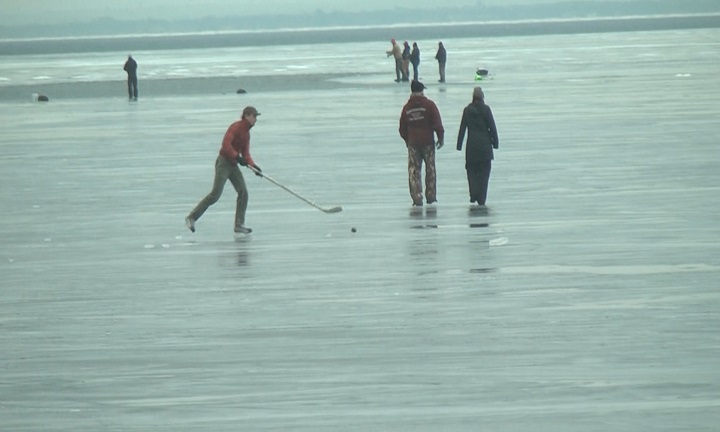How to be safe on the ice

MARQUETTE — If you’ve seen social media posts from your friends about skating or playing hockey on Lake Superior, you may have wondered, is that safe? What happens if one were to break through the ice and fall in?
While the Coast Guard and the Marquette Fire Department both maintain that all ice is unsafe, they recognize that people are still going to go out on it.
“When going out, you want to be prepared, you’ll want to check the weather, make sure the ice is thick enough,” said Marquette Firefighter and Paramedic Ben Gardner. “You want to have a good couple of inches and make sure it’s been below freezing for quite awhile.”
If the temperature has been above freezing and there’s snow on the ice, there’s an added hazard: air pockets. The air pockets are the result of the ice thawing, creating a crevice and then freezing over again. These spots are much weaker than the surrounding ice, and can be easily hidden under snow.
“That snow keeps the ice warmer when it warms up. It can insulate it and you won’t know what you’re walking on. So just be aware of that when you go out. It may look thick, it may look strong, but there’s a good, solid chance that there’s still going to be some weak spots out there,” said Boatswain’s Mate 2nd class Timothy Koscienly.
There is an advantage to going out on ice-covered ponds or small in-land lakes, even though the surface could still crack or break.
“That lake is only a couple hundred yards across, maybe a mile , and there’s not a large body of water, so if a piece of ice breaks, it’s not going to float out. On Lake Superior, and the harbors on Lake Superior, if any of that ice starts to break up or waves start forming on the rest of Lake Superior, those ice chunks are going to float out with you on them,” said Koscienly.
If you do decide to go out, whether it be on a pond or Lake Superior, you have to take some necessary precautions.
“Have someone with you. Never go out alone. When you do go out, let someone know that you’re going out, where you’re going to be, how long you’re going to be. Also, you could have a Marine radio or GPS tracker,” said Gardner. “You want to have the proper gear, you can have ice picks if you fall in to help yourself.”
Screwdrivers and life jackets are also effective tools to help you if you fall in.
If you witness someone fall through the ice, call 911 immediately and let them know exactly what time the person fell in. This is important because responders use a rule called the 1-10-1 rule.
Koscienly said “The first one is that you have one minute to catch your break. That’s for the gasp reflex when you hit cold water. The ten stands for ten minutes of meaningful movement so you have ten minutes to either get yourself out of the ice or get yourself stuck to the ice. Get your hands on the shelf or your clothing and get it frozen to the ice. That’ll prevent you from drowning. The other one is about an hour of consciousness after you’re in the water.”
After you call 911, don’t get too close to the person because you risk creating a falling in yourself.
